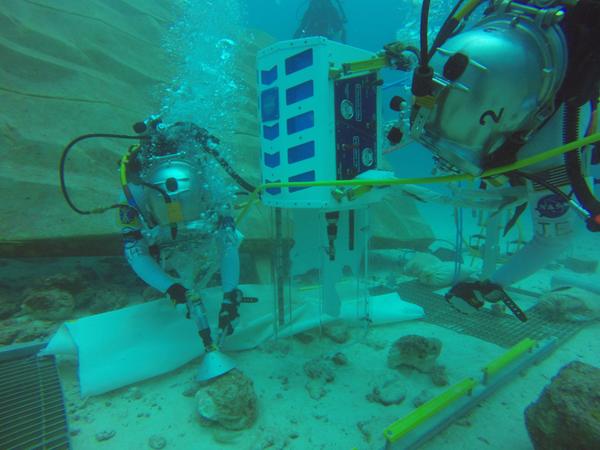Astronauts Begin 9-Day Mission ... Under the Sea

Four astronauts traded in their spacesuits for scuba gear yesterday (July 21) and embarked on a nine-day mission at the bottom of the sea.
As part of NASA's Extreme Environment Mission Operations (NEEMO) project, the international team of "aquanauts" arrived at an undersea lab off the coast of Florida to test technologies and training methods for future space missions.
Tomorrow morning (July 23), you'll be able to watch live on Live Science or NASA TV as the crewmembers answer questions about their mission, dubbed NEEMO 18, from 8 a.m to 8:45 a.m. EDT (1200 to 1245 GMT).
Yes, but we have a better view ;-) MT @esaoperations: @Astro_Alex & @Thom_astro are sharing pics #NEEMO18 #BlueDot pic.twitter.com/pDrH5m0TPa
— Thomas Pesquet (@Thom_astro) July 22, 2014
The NEEMO 18 astronauts and two habitat technicians have settled in at Florida International University's Aquarius Reef Base — the only permanent undersea lab — located about 6 miles (10 kilometers) away from Key Largo, 62 feet (19 meters) below the surface.
Japanese astronaut Akihiko Hoshide is commander of the mission. NASA astronauts Jeanette Epps and Mark Vande Hei, and French astronaut Thomas Pesquet, from the European Space Agency, round out the crew.
Sign up for the Live Science daily newsletter now
Get the world’s most fascinating discoveries delivered straight to your inbox.
According to NASA, the team's work will be centered on human health as well as behavioral health and performance. The mission will also include several extravehicular activities (EVAs), or simulated spacewalks underwater.
In past NEEMO expeditions, astronauts have used the lab to simulate walking on the moon and exploring an asteroid. They've also tested remote surgery technologies and spacesuit concepts.
NASA has another mission, NEEMO 19, scheduled for later this year. It will last seven days and begin on Sept. 7.
All of the astronauts currently inside Aquarius use Twitter and have been posting updates from their training and the start of their mission. Florida International University also has six continuous live feeds showing the work the aquanauts are doing on the seafloor.
Follow Megan Gannon on Twitter and Google+. Follow us @livescience, Facebook & Google+. Original article on Live Science.










